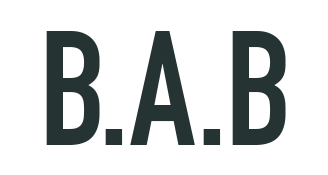Part of B.A.B's mission is to share more insights to different aspects of daily work in consulting and analytics. In this post, my buddy, Jeff Wu, provided a glimpse into his days working at Bain & Company as an entry level consultant. Jeff recently finished his MBA from INSEAD and will be returning to Bain.
Jeff also writes regularly to explore human potential through a collection of stories. He hopes to offer a glimpse into the deepest, most subconscious parts of your mind to help you discover your true potential. Check out his blog at https://www.thecitieswithin.com/.
“Okay, so you’re telling me, there may be a problem in the marketing message, and how customers perceive us as a platform and its suitability for them?” asked the Head of Marketing at a leading Fintech we were working with. It wasn’t an easy message to deliver to the guy in charge of all marketing campaigns and branding, to tell him that it’s been all wrong, which is why average AUM (Assets Under Management) per client has been stagnant.
“Yes, that’s the gist. Our current working hypothesis is that the marketing is geared a little too far to the young professional segment. You see it in all the ads. It’s been super effective in helping you guys acquire, well, exactly that segment. However, the youngest demographic also happens to be the poorest. So naturally, contribution size and follow-up contributions tend to be quite limited. Understandable. If you’re comfortable with this question, shall we move onto the next one?”
It was a Friday evening, around 8:30pm. So, no, I wasn’t jumping with joy, walking the Head of Marketing through a 30-question customer survey that we were hoping to launch early the week after. However, it was important and time-sensitive, so it had to be done. The survey would be part of a broader project to help this Fintech client understand “Why growth has stopped altogether?” This isn’t growth in the sense of users – that’s been on fire. But, being the vanity metric it is, user growth doesn’t always translate into profit or even revenue growth. There was a team of 2-3 consultants that would be conducting full-scale, 8:30am-7:00pm focus groups to uncover some of the latent, more subconscious insights around customers’ preferences, perceptions of the brand and platform, and what would encourage them to switch to the platform. I was part of the “quantitative research” sub-team, using a survey to quantify the magnitude of the problem (and inherently, the opportunity).
Leading up to the survey alignment call, I had been preparing the survey for a few weeks, refining the questions with the engagement manager and senior consultant on the team. You may be thinking “seriously, a few weeks to prepare a survey questionnaire?” Yes, seriously, and here’s why: first few days, you start with a broad structure of what insights you’re hoping to uncover that will prove or disprove the overarching (team) hypothesis of why growth has been stagnant. Around end of week 1, early week 2, you will have, say 3-4 sections of insights you’d like to acquire, and thus begin brainstorming the comprehensive (and I mean comprehensive) long list of questions within each section. A section could be titled “Why prospective clients don’t join”, while another could be “Why current clients don’t contribute more funds to their account”. You get the idea. Once you’re armed with the long list of questions, you align with the team to slim it down to a feasible quantity (for survey takers), and by that time, 2 weeks have flown by. In week 3, you’ll have the realistic set of survey questions ready, and you begin coding it (either yourself or with a survey vendor). In my case, I worked with an external vendor, and did a week’s worth of pure iteration.
“Hey Josh, thanks for hopping on the call with me. I wanted to quickly discuss a few changes in the survey. On page 2, question 3…”
Taking a step back, my role as a junior consultant (back then) was to run that quant workstream, deliver the insights that will help the client get back on track, and in the process, learn a thing or two about the industry and how to best solve the problem (both individually and with the consulting team). As a consultant becomes more senior, his or her responsibility grows to managing multiple workstreams, more directly interfacing with the client, and mentoring junior team members, passing on valuable tacit wisdom and advice on how to do work effectively, efficiently, and sustainably.
